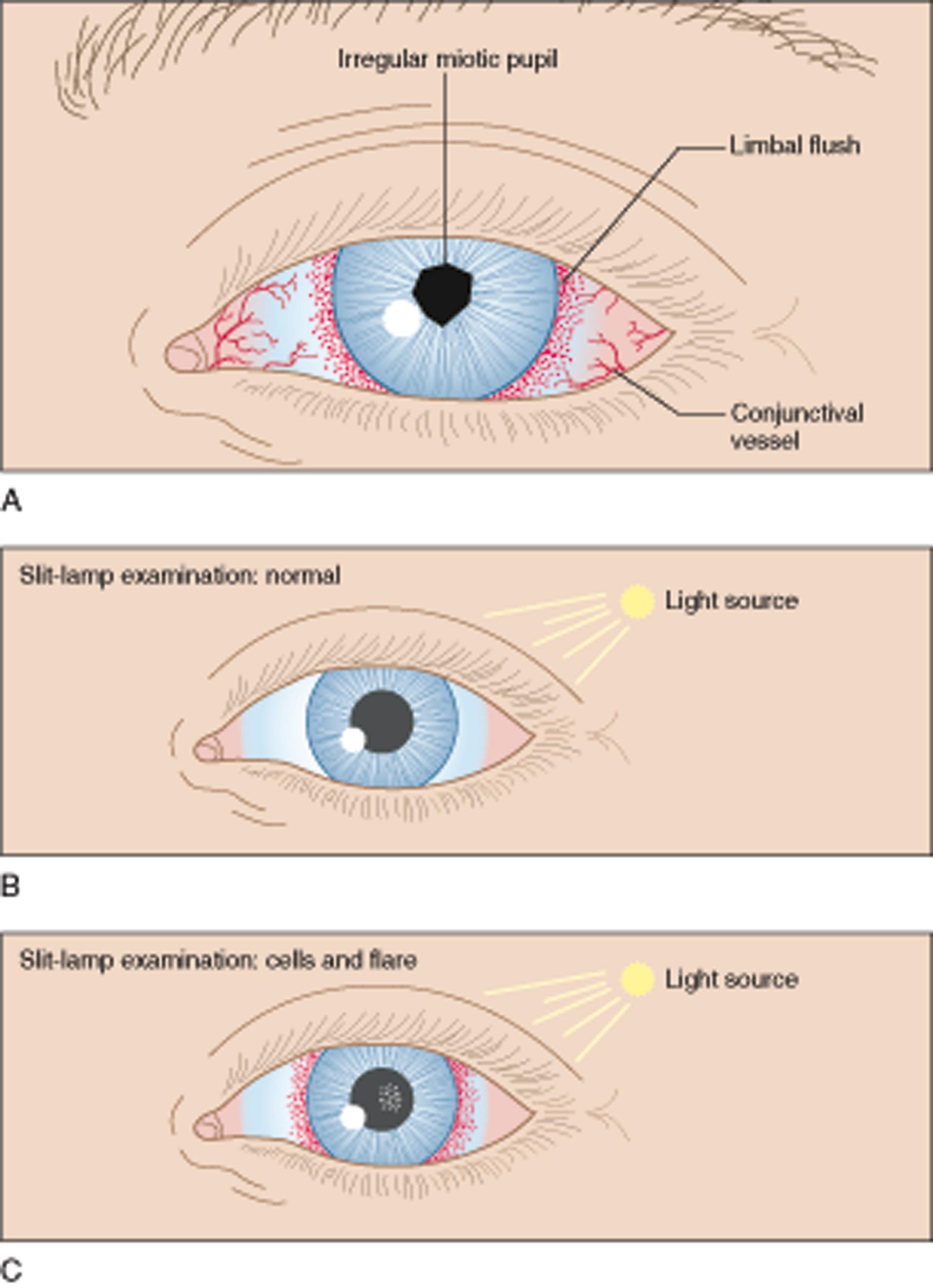Physical Address
304 North Cardinal St.
Dorchester Center, MA 02124
The patient usually complains of the onset over hours or days of unilateral eye pain, blurred vision, and photophobia. He may have noticed a pink eye for a few days, suffered mild to moderate trauma during the previous day or two, or experienced no overt eye problems. There may be tearing but usually no discharge. Eye pain is not markedly relieved after instillation of a topical anesthetic. On inspection of the junction of the cornea and conjunctiva (the corneal limbus), a circumcorneal injection, which on closer inspection is a tangle of fine ciliary vessels, is visible through the white sclera. This limbal blush or ciliary flush is usually the earliest sign of iritis. A slit lamp with 10× magnification may help with identification, but the injection is usually evident merely on close inspection. As the iritis becomes more pronounced, the iris and ciliary muscles go into spasm, producing an irregular, poorly reactive, constricted pupil and a lens that will not focus. The slit-lamp examination should demonstrate white blood cells or light reflection from a protein exudate in the clear aqueous humor of the anterior chamber (cells and flare) ( Fig. 21.1 ).

Become a Clinical Tree membership for Full access and enjoy Unlimited articles
If you are a member. Log in here